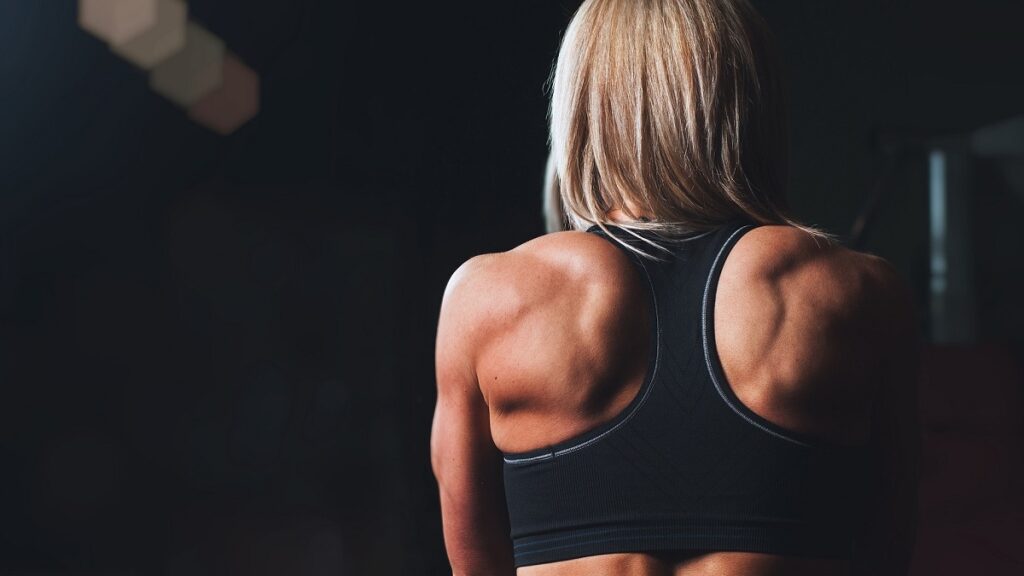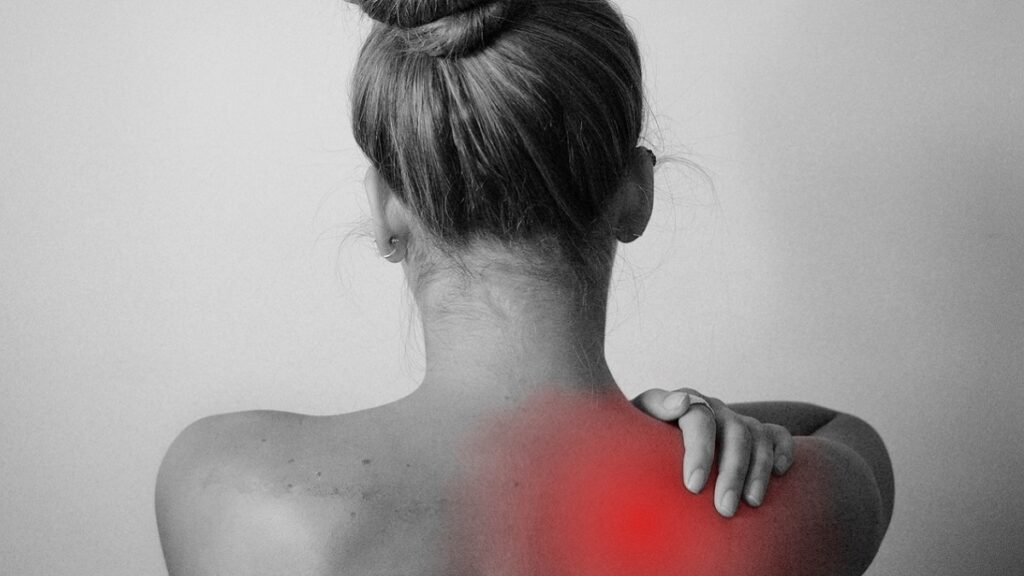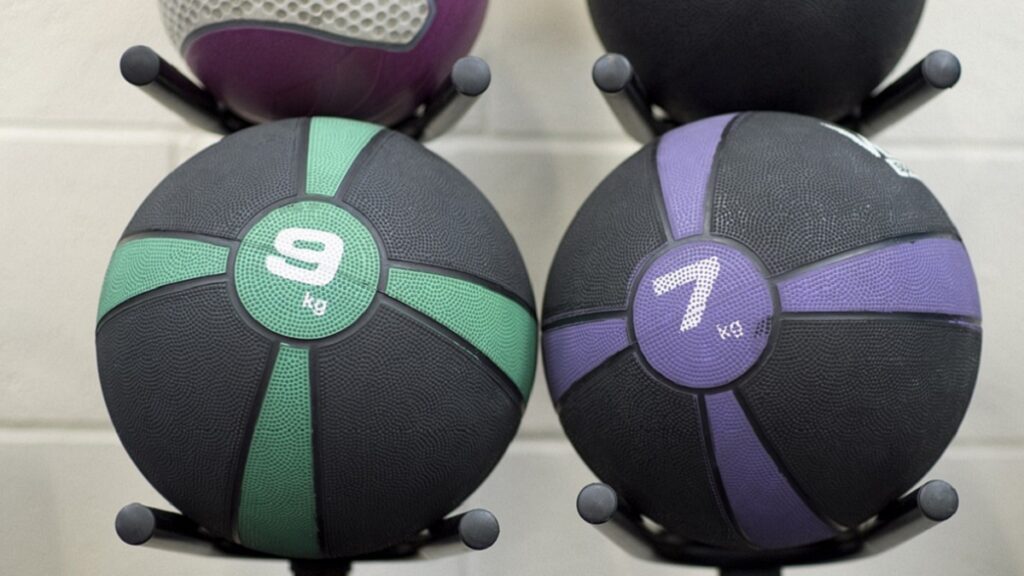The Bodyblade is a workout tool that aids in creating rapid muscular contractions that help to tone, stabilize, and enhance the body’s strength. The bodyblade exercises for shoulder use a low-impact environment to exercise the body while dynamically adjusting to the user’s requirements.
Bodyblade exercises for shoulder are jab, back extension, floor crunch, and lunges. It strengthens the shoulder muscles and aids in muscle treatment. The bodyblade also defines the deltoids and other muscles on the shoulders and arms. The exercise works specific muscles without support from others.
This post has the best bodyblade exercises for shoulder with detailed instructions on how to
perform them efficiently. Read to the end.
Bodyblade Exercises for Shoulder
There are many bodyblade exercises for shoulder that you can do and keep your shoulders defined. Yet, knowing the appropriate exercise and how to do them correctly can help improve efficiency and prevent injuries.
That said, here are some of the most efficient shoulder exercises you can do with a bodyblade.
Lunging Back and Shoulder Reach
Stand in a lunging stance, and lift your bodyblade overhead. Then vibrate the bodyblade as you lean forwards and backward.
The balance will improve by adding a lunge. You can improve it by adopting a “lunging narrow stance,” which closely aligns the front and back feet.
Lunging Rotational
This is one o the best bodyblade exercises for shoulder and other key areas, such as the abs and hips. You need to grip one bodyblade, both hands touching it while you’re in a standing position. To work the core, hips, inner thighs, and shoulders, begin with arms stretched out at shoulder-level height. Lunge and turn to the side of your front foot.
Next, take a lunging stance and rotate your body anticlockwise while vibrating the bodyblade.
Repeat the movement in the clockwise direction.
Jab
Stand on a wide base stance and grip the bodyblade sideways with one hand. Proceed by vibrating the bodyblade while moving your body forward and backward.
The jab bodyblade exercise tests the entire lower trapezius and shoulders complex. It’s also excellent for the thighs, abs, and postural muscles.
Back Extension
Lie down on your stomach and raise your feet and head upward. Extend your arms wide while holding a vibrating bodyblade.
Move Bodyblade from left to right hand or use both hands in the middle. It’s a powerful core burner that tests the entire upper trapezius, shoulder, arm, and abdomen.
This bodyblade exercises for shoulder is also excellent for developing posture.
Bicep Tricep Curl
Stand with your legs wide apart while holding the bodyblade with both hands. The bodyblade should be parallel to the ground right above the chest. Move with the vibrating bodyblade back and forth.
Start with your elbows flexed at 90 degrees. This exercises the muscles in the biceps, triceps, shoulders, and core. You can also increase elbow extension or move slowly through flexibility for a tougher workout and coordinated exercise. The more space between you and your body, the harder your core muscles work to keep you balanced.
Lateral Raise
The exercise strengthens the upper back, pec, deltoids, biceps, and triceps while emphasizing the link between the entire upper body. Performing a range of motion while doing the lateral raise bodyblade exercises for shoulder provides increased trunk stability.
Just like the normal lateral raise dumbbell exercises, hold two body blades parallel to the ground as you squat slightly. Also, stance with your feet parallel to each other as you move your upper body back and forth slowly and smoothly.
Next, vibrate the two bodyblades as you hold them firmly and repeat the to and fro upper body motion 15 to 20 times.
Floor Crunch
Do you want to take your crunch exercise to the next level? The Bodyblade floor crunches are a perfect workout for you. Grasp the Bodyblade in front of your chest in the Flat Edge position while assuming a partial crunch position with your heels barely contacting the ground for support. Raising your feet off the ground makes it harder and strengthens the abs, shoulders, arms, back, and chest.
Then move the body forward and backward in a crunch movement when vibrating the bodyblade for the best experience.
For experts, holding the Bodyblade in front of your chest in the Narrow Edge position while assuming a partial crunch position with your heels barely contacting the ground for support allows you to progress it even further. You can increase the difficulty by putting your feet up off the ground when doing the bodyblade exercises for shoulder.
For increased support, rotate Bodyblade to travel upward toward the ceiling and down near the floor. That strengthens the arms, shoulders, back, chest, and abs.
Rotational Floor Crunch Advanced
You can also modify the Floor crunch exercise by getting into a semi-crunch position with your heels barely touching the ground. Raising your feet off the ground makes it challenging. Rotate your upper body to expand focus on the oblique muscles and strengthen the abs, shoulders, arms, back, and chest.
What Does Bodyblade Do for Shoulder?
A bodyblade is a medically helpful tool for static and dynamic shoulder abduction. It’s also a dynamic response treatment tool that produces force proportionally to the resistance of active vibration stimuli. It generates a correct vibration and resistance training stimulation of 151 N by 4.5 Hz, requiring 270 muscle contractions per minute.
Although the workout with a bodyblade is an open kinetic exercise, the resistance produced by the resistant vibration stimulus causes resistance from the distal to proximal body segments. Consequently, it causes co-contraction and eccentric contraction that can be obtained from closed kinetic exercise followed by dynamic stabilization of muscles.
Various kinetic chain training patterns can be used with a bodyblade. However, most earlier studies mainly looked at their direct and limited effects, such as stabilizing core and shoulder flexion.
What Muscles Does the Bodyblade Work?
The shoulders and arms are the key muscle groups that bodyblade targets each time you do bodyblade exercises for shoulder. The biceps are worked while you hold the blade in the middle. You hold the underhand of the blade to exercise your triceps and forearms. You must also perform the six functional exercises recommended in the kit to tone your legs, back, and abdominal muscles.
For best results, utilize Bodyblade as directed in the DVD, which takes 10 minutes to complete multiple times each week. All the exercises here may also tone your back, arms, legs, and chest muscles. In addition, it helps in back-muscle recruitment.
How Often Should You Use Bodyblade?
A fantastic approach to improving strength, stability, muscle endurance, and cardiovascular fitness is using your Bodyblade 3–5 times weekly. So, do bodyblade exercises for shoulder often.
The more force you exert to bend the blade, the more resistance you’ll encounter. Increasing the distance between your body and the Bodyblade will cause a significant increase in the challenge and resistance. So, slowly stretch your arms away from your body’s core to accomplish this.
Set a time limit of 60 seconds for each position. Your first aim can be divided into smaller time chunks, such as six sets of ten seconds each. You can hold each posture for longer as your muscle endurance increases.
Increase the duration of all single bodyblade exercises for shoulder until you become fatigued for a greater challenge. You can design a dynamic training program to meet your training objectives by varying time and intensity.
What Type of Exercise is Bodyblade?
Bodyblade exercises for shoulder engage the body’s smallest anchoring muscles before activating the larger, more powerful ones. The deep, postural muscles of the trunk that attach to the shoulders, arms, pelvis, hips, and legs are instinctively worked.
These smaller muscles assist your body’s larger, more powerful muscles to be under control. Using Bodyblade, both large and small muscles receive a fantastic workout.
The workout becomes more intense as the flexing tips’ amplitude, or magnitude, grows because the harder you drive the blade, the more it responds. The oscillation rate remains constant. The resistance you require to control the blade when doing bodyblade exercises for shoulder can be anywhere from 1 to 34 pounds. It all depends on the amplitude of the flexing tips.
What Are the 3 Shoulder Muscles?
The Deltoids and Rotator Cuff Group make up the shoulder complex. The Rotator Cuff Group, which is placed inside the shoulder joint and provides structural support and enables the shoulder to execute various duties, is located there as opposed to the Deltoids, which are the muscles visible outside the body.
Three components make up the deltoid muscles:
- The front deltoids or anterior deltoids: Assist you in moving your arm forward. Your clavicle is where they attach.
- Lateral deltoids: Aid in extending your arm laterally. Your acromion, a bony knob on your shoulder blade, is where they attach. Jumping jacks require the usage of your side delts.
- Rear delts or posterior deltoids: Move your arm backward. Your shoulder blade’s flat front is where they attach. When you throw a baseball, your back delts are engaged.
How Often Should You Use Bodyblade?
You can use the bodyblade thrice a week. Starting is also very simple. You only need to move the blade back and forth until it starts to oscillate by placing your hands on the central hand grip.
The blade oscillates at distances varying from a few to several inches, but your elbow and hand shouldn’t move more than half an inch in each direction, depending on how much force you put into the action, from inches to two feet.
How Effective Is a Bodyblade?
The Bodyblade is a fairly effective tool with a wide range of applications. If your main goals are to get stronger or more toned, I would not suggest it as a general fitness tool. It cannot substitute a good set of dumbbells, a bench, a kettlebell, or other comparable exercise equipment. It doesn’t take the place of effective ways to work out.
Lifting weights is necessary if you want to gain muscle mass or strength; this also cannot take the place of lifting.
However, if you meet specific requirements, utilizing them is beneficial. Rehab following an injury is one such circumstance. As an illustration, I first used the Bodyblade while recovering from a shoulder injury. It works well in that environment when I’m trying to strengthen my rotator cuff because I can quickly see the needed structural changes based on the effort level.
Prehab, or the strengthening of particular muscles that are frequently the source of issues, is another example of a related use case. Many people’s core muscles might use some strengthening because they tend to be weak. The Body blade helps me maintain my shoulder stability and strength, which is crucial to me.
Finally, it will be helpful to some people who may have a general weakness or lack of muscle control. For instance, many elders experience a gradual loss of strength and physical control. For them, this would be fantastic. The Bodyblade might be helpful for people with specific medical issues, like MS. But a stroke victim with generalized weakness may use it effectively.
Can You Do Bodyblade Training Everyday?
Bodyblade is an efficient tool for shoulder rehabilitation. Providing safe equipment and surroundings for persons who require physical rehabilitation is crucial. Additionally, you wouldn’t want the process to cause any additional harm, but doing bodyblade exercises for shoulder daily won’t harm your muscles.
A device like Bodyblade can help you perform better while not harming yourself. As a result, it’s ideal for recovery.
Bodyblade enhances stamina, balance, coordination, and other skills. Bodyblade is a wonderful tool for shoulder rehabilitation and is practical for people who wish to condition their bodies thanks to all these qualities.
Balance is one of the key elements of physical rehabilitation. It’s essential to have superb balance and flawless body control. An older adult could have trouble balancing and controlling their body. It won’t be a problem with Bodyblade, and anyone can use them for exercise.
Programs for rehabilitation following a stroke, shoulder injury, spinal injury, and long-term disability can use Bodyblade. It can also be used to improve your fitness regimen and for strength training.
What Is the Most Effective Shoulder Exercise?
To complete a balanced physique and achieve that broad-shouldered appearance everyone is after; well-developed shoulders are essential. The three heads of the deltoid muscle are frequently overlooked, though – that is a grievous error.
The three-dimensional appearance of your shoulders results from the proper growth of all three parts. So it’s hazardous to ignore any of the heads.
How Long Should You Use a Bodyblade Daily?
There is no limited time to use a bodyblade daily. As long as you’re comfortable doing the bodyblade exercises for shoulder, you can set any preferred time.
Besides, you can perform the exercises for as low as a quarter of an hour per day and still tone your shoulders. That can also help you burn fats, help in weight loss, and improve flexibility like other strength training workouts.
Who Should Not Use a Bodyblade?
Almost everyone can use a bodyblade. However, there are some special cases where you shouldn’t use it. For instance, it can cause spinal compressions for some patients under spinal medication leading to slower recovery.
That was proven after testing it on an experimental group of different patients. Therefore, you’re advised to use lower amplitudes and frequencies for safety when doing bodyblade exercises for shoulder.
What Exercises Strengthen Your Shoulder Blades?
There are many exercises you can use to strengthen your shoulder blades. Here are some of the most efficient ones.
- Shoulder roll: With your chin slightly pulled in, stand tall. Imagine being pulled straight up by a cord at the top of your head. In a back-and-up motion, shrug your shoulders up toward your ears. To relax the shoulder, make a circle with your shoulders. At most, two to four times, repeat the circles.
- Shoulder stretch: Let your shoulders relax. Reach across your chest with one arm up to shoulder height. With your other arm, gently pull the arm in your direction. You’ll benefit from a light stretch as a result. For around 6 seconds, hold. Do this 2 to 4 times.
- Rowing: Your elastic band or tubing should be anchored at about waist level. Each hand should hold one end. Straighten your arms out in front of you. To add a little bit of stress to the band or tubing, adjust your distance. Pull straight back without shrugging your shoulders. Your waist will be parallel to your elbows.
- Pulldowns: Fix two elastic tubing on your ceiling and hold each on your hands. Next, pull them down slowly while keeping your back straight but bending your elbows.
Is Bodyblade Effective?
A bodyblade is an effective tool to strengthen your muscles without needing too many rotator cuff weights and stabilization tools. It’s also cost-friendly as related to other workout equipment compared to its wide range of uses.
A bodyblade is also a medically useful tool for shoulder muscle strengthening both statically and dynamically. Furthermore, it’s a dynamic response treatment tool that generates force proportionally to the resistance of active vibration stimuli. Therefore, do bodyblade exercises for shoulder as long as you’re physically and medically fit.
What is the Bodyblade Good For?
Using a bodyblade to tone your shoulders has many goodies. For instance, because Bodyblade is solely based on inertia and the interaction between you and your Bodyblade, there is no need for pulleys, additional weight, or a thera-band used to vary resistance.
You can challenge your entire neuromuscular system by changing the force you apply to the Bodyblade. That will offer you the greater resistance and coordination needed when you start doing bodyblade exercises for shoulder. Also, you can create an exercise wall chart to help you plan the exercises and focus on all deltoids.
Bodyblade is also quite versatile. Typically, there are distinct fitness tools for each purpose. Several tools exist for increased strength, endurance, physical treatment, and back muscle activation. By purchasing a Bodyblade, you can accomplish these tasks without purchasing additional equipment or supplies, saving you money.
Bottom Line
Body blades are an excellent complement to your workout equipment. It’s a fantastic option when you want to exercise but don’t feel like going to the gym. It may be used safely at home, but getting a greater shoulder requires following the exercise schedule.
What’s more? A physical therapist created it. So you know the product works by considering the demands of your neuromuscular system.
We hope the bodyblade exercises for shoulder I’ve discussed will help you build stronger shoulder muscles.



